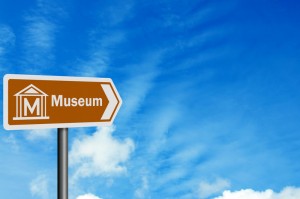Guide to Museum and Heritage VAT
Museum VAT and Heritage VAT
The VAT treatment of museums and heritage organisations depends  upon the type of organisation.
upon the type of organisation.
Commercial or Private Museums and Attractions
Museums that charge for entry will normally charge VAT on their admissions. This allows them to recover the VAT they incur on their costs.
Where no admission charge is made, income might still be generated within the museum. For example, there may be retail sales, catering or rides. In my view, in such cases, any VAT incurred should normally be recoverable. Unfortunately, HMRC does not always accept this. They sometimes argue that free admission must automatically mean there is non-business activity. With a normal commercial attraction, this argument is unlikely to be correct. This is because there clearly is a commercial rationale to allowing the public in for free.
Sometimes museums are formed from private collections where the public are granted access. If a charge is made, there may be a business activity taking place that allows VAT registration. This will mean it is possible to recover some of the VAT on costs. Whether HMRC will accept this and the extent to which VAT is recoverable will depend upon the facts. They should not automatically reject registration on the basis that costs exceed income as a loss-making activity can still be business for VAT purposes.
Charity Museums and Attractions
VAT Cultural Exemption
When an entry charge is made, it may be VAT exempt under the VAT cultural exemption. This applies to supplies of admission made by non profit making bodies that are controlled and administered on an essentially voluntary basis. Quite what this means is still the subject of debate. HMRC policy makes a distinction between organisations with active paid management teams that make all major decisions and ones where trustees make major decisions. They argue the former cannot be within the exemption.
HMRC policy is that some admissions are not covered by the exemption. e.g. they do not accept it applies if you charge for entry to a garden.
In practice, whether the cultural exemption applies is often a grey area. This is not necessarily a bad thing, as many organisations lose out from the exemption. The current rules also mean it is possible to arrange your affairs so that you can escape from the exemption if this is beneficial. For example, if you undertake an expensive project and need to recover the associated VAT, you might decide on making a senior employee a trustee and escape the exemption.
Cultural Exemption VAT Recovery
The downside of the cultural exemption is that it results in a VAT recovery restriction. Any VAT that relates directly (is attributable) to the exempt supply of admission is irrecoverable. However, VAT that relates to both exempt admissions and taxable supplies (residual VAT) is partly recoverable. Deciding whether VAT is wholly irrecoverable or recoverable in part is an essential part of the partial exemption calculation. It is not surprisingly often a cause of dispute.
Generally, HMRC takes a hard line on recovering VAT on permanent exhibition costs. They view them as being wholly attributable to the exempt supply of admission and irrecoverable. This is not always correct. Often there are taxable supplies sufficiently connected to the exhibition expenditure for some of the costs to be treated as residual. For example, there may be sales made in historic shops in an open-air museum or publications that interpret the collection.
A museum with exempt admission income should ensure that its partial exemption method is optimal. The standard (or default) method is based on income, and this may give a lower recovery than a special method.
The HMRC notice that explains their policy on the cultural exemption can be found here.
Free Admissions
Where no charge is made for admission, then HMRC generally takes the view that there is a non-business activity. This is not automatically correct if the decision to grant free public access is a commercial one. i.e. revenue is generated from shops, cafes and other charges.
Where a non-business activity is undertaken, then VAT recovery is restricted. The exception is if the museum is designated as a national museum. These are allowed to recover VAT on non-business activity under a special VAT refund scheme. This was introduced to allow museums to offer free public admissions without suffering a VAT restriction. Prior to it, many museums were introducing charges partly to ensure that they were in business for VAT purposes and could recover VAT.
Ironically since the introduction of the refund scheme, the rules concerning the cultural exemption have also changed. It is now possible that a free museum that introduces charges could find itself making exempt supplies. Meaning charges could actually now reduce VAT recovery. Unlike partial exemption, where the method you must use is clearly set out in law, the rules concerning a non-business restriction are a lot more flexible. You do not need formal HMRC permission to improve your method, providing it gives a fair and reasonable result.
There are lots of possible business/non-business methods. I can advise if adopting a different one will improve your VAT recovery.
Ex Local Authority Museums and VAT recovery.
Increasingly local authorities are passing the operation of their museums over to charities. Where this happens, it may be possible to treat money paid by the local authority to support the museum as payment for a taxable supply. This can improve a museums VAT recovery.
Contact Me
Museum VAT can be complex, but I have advised on it for many years. See my museum services page for information on how I can help. If you would like to receive my occasional newsletter, then subscribe here.
If you have any questions or would like to discuss your situation on a free no-obligation basis, contact me.